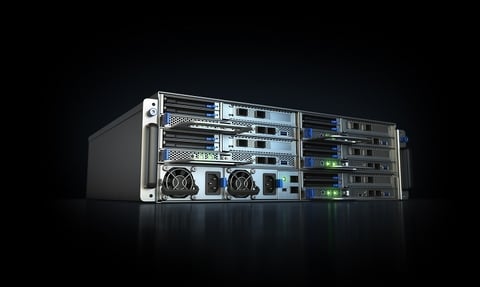SAN JOSE, Calif.—Nokia brought a shiny new piece of hardware to show off at Layer123 NFV & Zero Touch & Automation Forum World Congress, a server that was inspired by the Open Compute Project (OCP) and designed to be easy to install and service.

solution is an industry first. (Nokia)
It’s a cloud data center solution, based on x86, built and tailored to support edge cloud deployment. It’s also complemented by a real-time, Open Platform for NFV (OPNFV)-compatible, OpenStack-distribution system built to run in small data centers while providing the performance and low latency required by the edge environment.
“It’s not a closed approach,” said Henri Tervonen, CTO and head of R&D Foundation, Mobile Networks, at Nokia. “This can provide the capability at the edge of the network,” and it’s scalable from a single server to multiple racks.
Nokia is planning to contribute the designs of this solution to the OCP, he said.
RELATED: Nokia: xRAN provides chance to differentiate against competitors
Even though big telecom infrastructure vendors like Nokia have sold proprietary products for years, the company says it’s committed to open source and would rather be part of the movement than get left behind.
Conveniently, Nokia also got a shout-out from Intel, which is supplying the next generation Intel Xeon Scalable processor for the solution.
“The edge cloud is an integral part of 5G network architecture, bringing more processing capabilities closer to where data is generated and consumed,” said Dan Rodriguez, vice president, Data Center Group; general manager, Communications Infrastructure Division at Intel. “With AirFrame, Nokia and Intel are bringing the performance and capabilities of Intel architecture-based cloud data centers to the edge to deliver the optimal end user experience for 5G deployments including virtual reality, augmented reality and industrial automation."
Not only is Nokia’s solution designed to support early 5G applications such as fixed wireless access, it also supports the more ambitious goals that involve things like autonomous cars, which will require a super highly densified network. It’s small enough to be placed strategically to enable Cellular Vehicle-to-Everything; it could also be put into a factory. How many of the servers would be deployed depends on the services they’re designed to support, but typically there would be more than one in a factory.
The server will start shipping and be commercially available in the third quarter.

